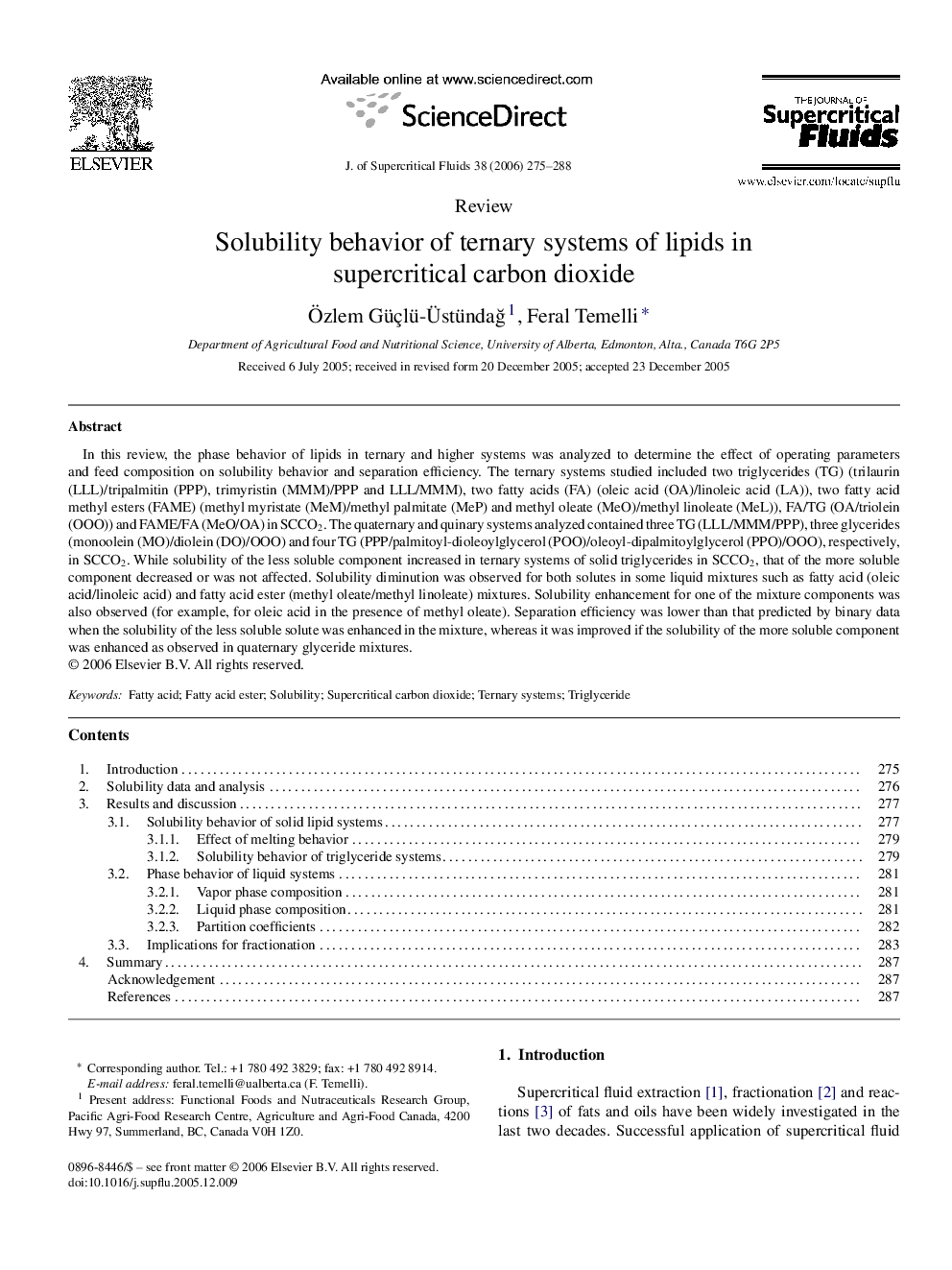| Article ID | Journal | Published Year | Pages | File Type |
|---|---|---|---|---|
| 232221 | The Journal of Supercritical Fluids | 2006 | 14 Pages |
In this review, the phase behavior of lipids in ternary and higher systems was analyzed to determine the effect of operating parameters and feed composition on solubility behavior and separation efficiency. The ternary systems studied included two triglycerides (TG) (trilaurin (LLL)/tripalmitin (PPP), trimyristin (MMM)/PPP and LLL/MMM), two fatty acids (FA) (oleic acid (OA)/linoleic acid (LA)), two fatty acid methyl esters (FAME) (methyl myristate (MeM)/methyl palmitate (MeP) and methyl oleate (MeO)/methyl linoleate (MeL)), FA/TG (OA/triolein (OOO)) and FAME/FA (MeO/OA) in SCCO2. The quaternary and quinary systems analyzed contained three TG (LLL/MMM/PPP), three glycerides (monoolein (MO)/diolein (DO)/OOO) and four TG (PPP/palmitoyl-dioleoylglycerol (POO)/oleoyl-dipalmitoylglycerol (PPO)/OOO), respectively, in SCCO2. While solubility of the less soluble component increased in ternary systems of solid triglycerides in SCCO2, that of the more soluble component decreased or was not affected. Solubility diminution was observed for both solutes in some liquid mixtures such as fatty acid (oleic acid/linoleic acid) and fatty acid ester (methyl oleate/methyl linoleate) mixtures. Solubility enhancement for one of the mixture components was also observed (for example, for oleic acid in the presence of methyl oleate). Separation efficiency was lower than that predicted by binary data when the solubility of the less soluble solute was enhanced in the mixture, whereas it was improved if the solubility of the more soluble component was enhanced as observed in quaternary glyceride mixtures.
